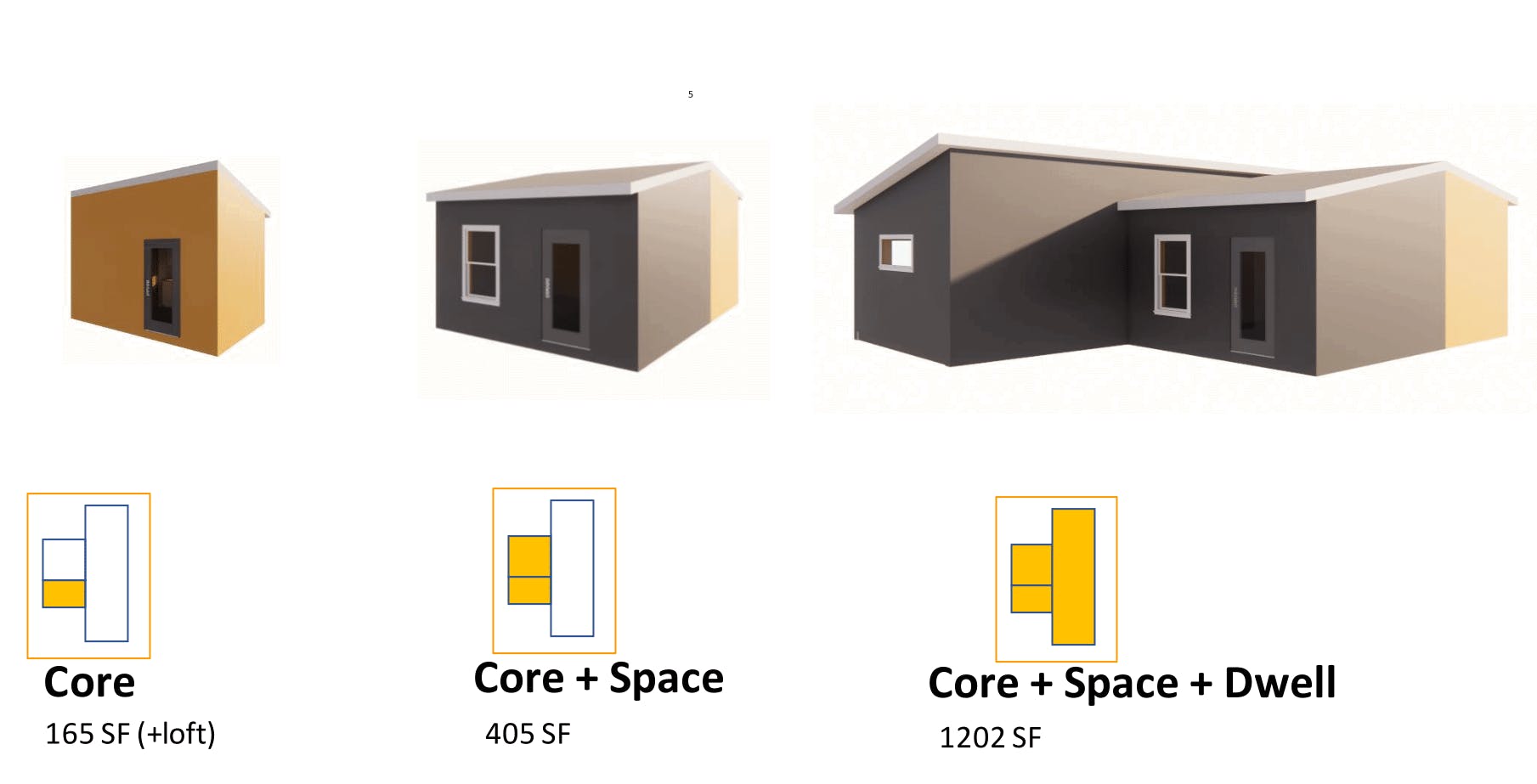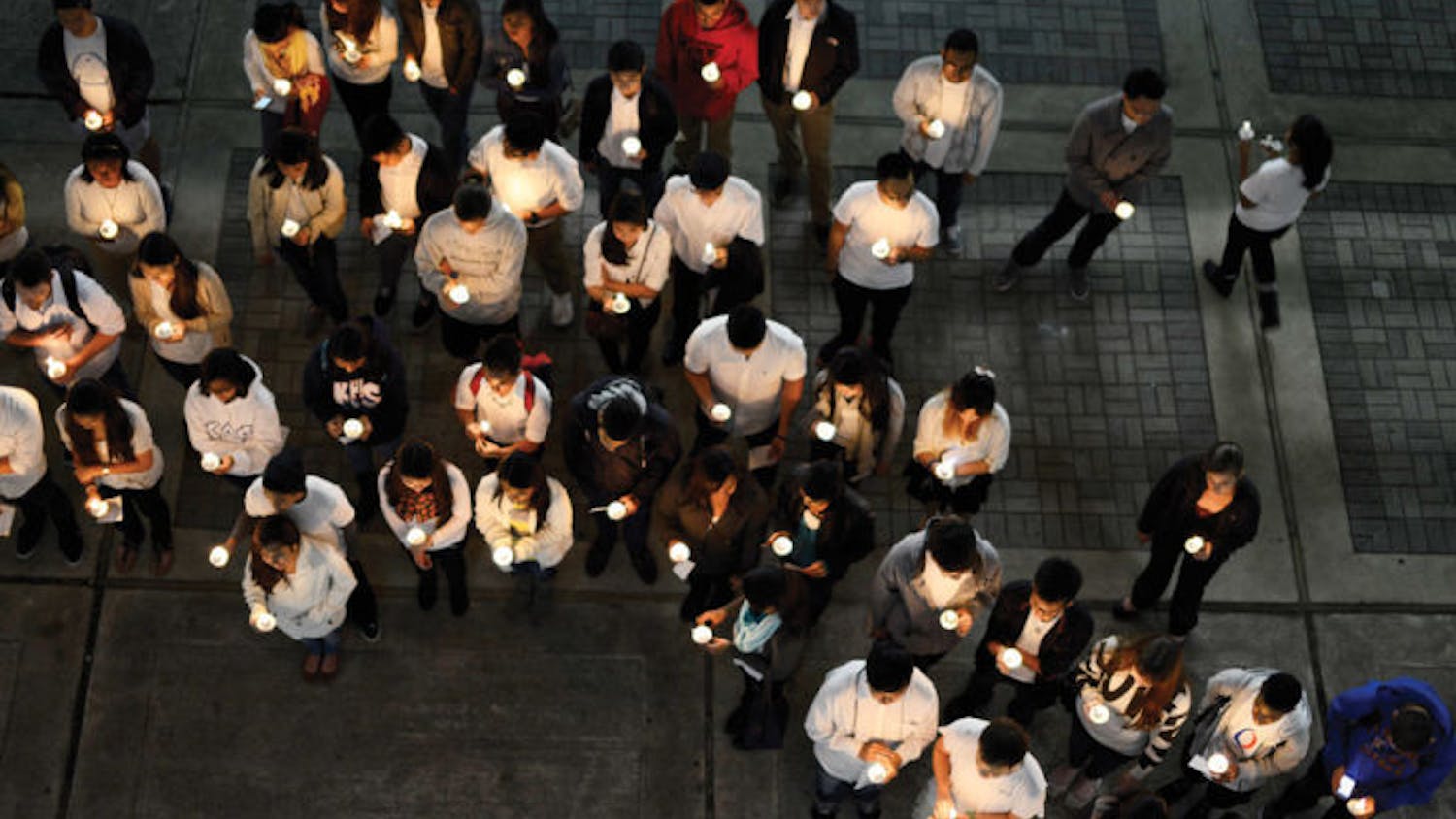
The CORE+ design for families that have been displaced by natural disasters.
Solar panels. Cool roofs. All in a sustainable, compact space in case disaster strikes.
A UF team is working on a project, known as Advanced Modular Housing Design, which aims to provide a safe and affordable housing option for families that lost their homes to natural disasters. The team calls their housing units CORE+.
During a Tuesday meeting, stakeholders, including representatives from the U.S. Department of Housing and Urban Development and LG Solar, gathered to provide feedback and advance the housing design.
“The project will provide local planners, manufacturers and government officials with a blueprint and tools necessary for rapidly housing people who experience a disaster,” said Jagruti Rekhi, a housing and urban development analyst.
The project’s primary goal is to design sustainable, affordable and resilient post-disaster housing, said Charles Kibert, project leader and director of the UF Powell Center for Construction & Environment.
Maryam Kouhirostami, a research assistant on the team, said the plan could be a solution for people in need of shelter after storms if theirs was damaged.
“Some people who have the money can go to a hotel even staying for longer periods of time, or they can stay with family in another area, but many people cannot do that,” Kouhirostami said. “This is an attempt to provide that demographic with another solution.”
The homes are made of three prefabricated portions that combine into one functional unit. The first portion of the home can be delivered rapidly to provide immediate shelter and includes a bathroom, kitchen small and sleeping space.
The two units that follow add space and comfortability for families. The housing units use energy efficient features such as multi-paned windows and window overhangs, cool roofs and two directional fans.
The small amount of energy used by the homes is produced by solar power units. A revolutionary aspect of the housing plan is that the units can be energy independent when needed, which is crucial during long periods without power, Kibert said.
The CORE+ is designed to produce more energy than it consumes, said Ravi Srinivasan, the team’s energy and services lead.
The housing design is a response to the country’s affordable housing crisis, said Jeffrey Carney, the team’s lead architect. Much current housing is unaffordable, and the affordable housing options offered are at high risk to natural hazards, he added.
Carney believes the unit addresses long-term displacement issues.
“You look at other affordable housing designs and they’re terrible,” he said. “They’re made out of plastic. They fall apart in 10 years. It’s not a good investment, and the bank isn’t going to loan you a 30-year mortgage because they know that the house isn’t going to last that long.”
Carney said that part of the project is creating financial solutions for buyers. “We have to create a product that can be financed, and then we have to create policies that make it accessible in the community,” Carney said. “Right now, those things are totally disconnected. We have to align policy, technology and efficiency.”
The team hopes to finish designing CORE+ units for Gainesville — and other parts of the southeastern U.S. — by Sept. 30, 2021.




